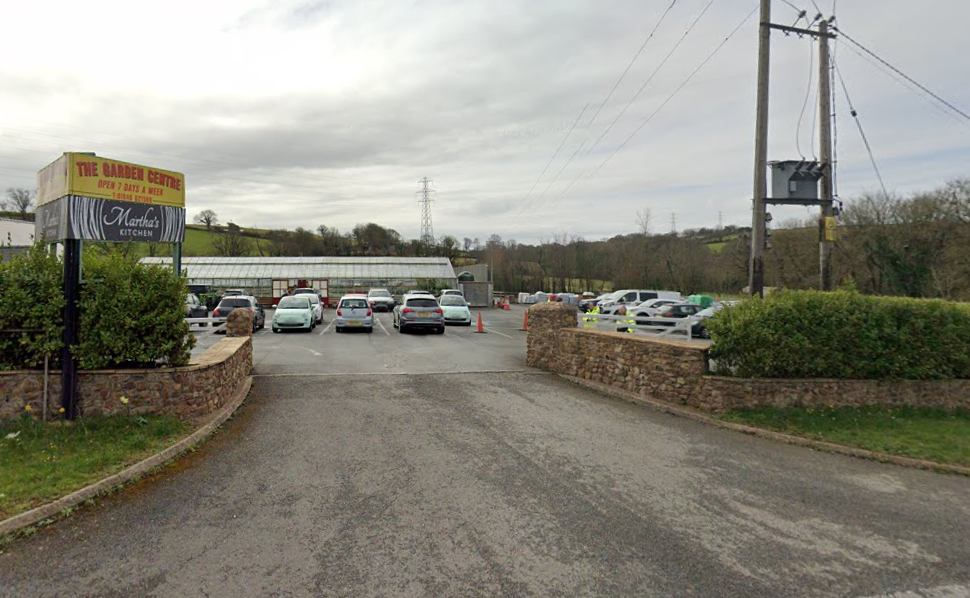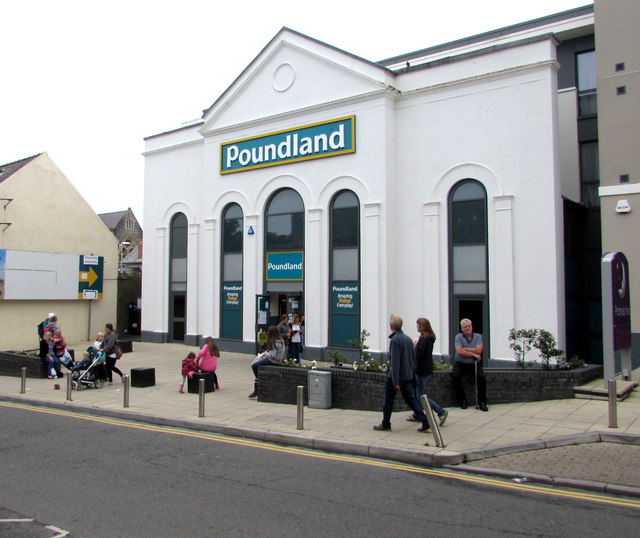Politics
What is the future for Labour?


Labour leadership hopefuls: L-R (in picture) Liz Kendall, Andy Burnham, Yvette Cooper, and Jeremy Corbyn.
FOLLOWING Ed Milliband’s resignation after the General Election, The Labour Party has been doing a serious amount of soul-searching. Numerous reasons have been given for the party’s poor performance, even though they gained seats in England and only lost one in Wales.
The most common reason given from inside the party is a variation on the theme that under Ed Milliband, the party veered too sharply to the left. There have been numerous ways of expressing this, from Chuka Umunna claiming that the party needed to be more ‘business friendly,’ to acting leader Harriet Harman and candidate Liz Kendall refusing to vote against the Conservatives’ welfare bill because British people have real concerns about benefit spending.
This contrasted sharply with the experiences of many canvassers who felt abandoned by the parliamentary Labour party, which made constituency candidates something of a hard sell in places. Across the country, the emergence of UKIP as, if not a credible political force, then certainly one strong enough to influence the outcome of any seat, was largely at the expense of what Labour would have considered core voters in 1997. Anti-austerity parties to the left also benefitted from Labour’s perceived lack of opposition to Conservative policies.
The election of a new Labour leader was meant to be the fairest and most transparent to date in a party that has traditionallyprideditselfonadherenceto democratic principles. Jeremy Corbyn, described ad nauseum in the press as an ‘Old Labour dinosaur,’ and a ‘veteran left-winger’ was only put on the ballot after 35 MPs, many of whom had no intention of voting for him, decided that all facets of the party should be represented. That these MPs were subsequently described as ‘morons’ by one of Tony Blair’s former advisors shows the extent to which the left-wing of the party is viewed as an embarrassment nowadays.
A strong showing ofpopular support for Mr Corbyn has led to outcry in the national press. A YouGov poll recently put him on CHECK %, leading to claims that the poll was inaccurate, and leading people to predict a schism in the Labour party similar to that which occurred when Michael Foot was made leader – something Mr Corbyn has blamed for the landslide defeat in 1983. The Daily Mirror, the only remaining left-wing tabloid, has suggested implementing an ABC (anyone but Corbyn) strategy, while on the other end of the scale Toby Young has suggested that those on the political Right join the Labour Party and vote for Mr Corbyn as a way of bringing down the Labour Party.
Mr Corbyn is certainly different to any leadership contender since the early nineties, if not before. Having said that, John Smith was considered to be on the centre-right of the party then, which shows how much the political landscape has shifted. The public spending cuts that Ed Balls claimed he would not alter if Labour were elected would have had an old One Nation Tory like Ted Heath spinning in his grave. Mr Corbyn has claimed that the role of leader should be more about facilitating debate rather than developing policies. He is known to favour the abolition of student fees, scrapping Trident, and the renationalisation of the rail industry.
There has been uproar in the Labour party about this. Apparently Labour should not be a party of protest but a party of government. It appears that from an opposition perspective, this means agreeing with most of what the party in power proposes, on the basis that they were voted in and are therefore what the electorate want. It may be facile to suggest that this makes the concept of an opposition moot, but certainly the parameters of debate will be narrowed.
Interestingly, a journalist for the Independent checked out the YouGov poll results for Mr Corbyn’s policies, and found that the public were heavily in favour, with 60% in favour of nationalising trains, for example. It appears that the claims that the Labour party has already suffered a split between the grass-roots supporters and the metropolitan ‘elite’ may have some basis in fact. A point which appears to be overlooked is that ‘three-time-winner’ Tony Blair still had the support of Labour’s core vote, until it began melting away over the New Labour years. Without this support, and without any way of either working with the SNP or encouraging Scottish voters back into the fold, the ‘swing seats’ targeted in ’97 will be increasingly irrelevant.
Andy Burnham, the politician many party insiders would like to see get the nod, is nominally on the left of centre, in the same way Yvette Cooper is slightly to the right. Mr Burnham is the only candidate to say that he would serve in a Corbyn shadow cabinet. Liz Kendall, considered one of the Blairite faction’s big hopes, has performed poorly, and is fourth-placed by some margin. A spoof facebook page – Liz Kendall for Conservative Leader – had nearly as many ‘likes’ as her own page before it was deleted. A problem appears to be the unwillingness of the other three candidates to commit on issues, for fear of jeopardising their shot at the top job.
Whoever emerges as Labour leader in the coming months will be in an unenviable position. They will have to reconcile those on the political Left and Right, and attempt to appeal to disillusioned Labour voters, as well as trying to take votes from the Conservatives and UKIP and, in all probability, having to work with the SNP and possibly Plaid Cymru in Wales, both parties with a broadly left-of-centre manifesto. It is far too early to tell what sort of a party will emerge at the other end, the outcome of a leadership battle fought across such a wide spectrum, and the ensuing rise in the number of party members, many of whom are looking for a credible alternative to the Tory-lite policies of the last two decades, will mean the party will indeed be living in interesting times.
Business
Cosheston Garden Centre expansion approved by planners

PLANS to upgrade a garden centre on the main road to Pembroke Dock have been given the go-ahead.
In an application to Pembrokeshire County Council, submitted through agent Hayston Developments & Planning Ltd, Mr and Mrs Wainwright sought permission for upgrade of a garden centre with a relocated garden centre sales area, additional parking and the creation of ornamental pond and wildlife enhancement area (partly in retrospect) at Cosheston Garden Centre, Slade Cross, Cosheston.
The application was a resubmission of a previously refused scheme, with the retrospective aspects of the works starting in late 2023.
The site has a long planning history, and started life as a market garden and turkey farm in the 1980s, and then a number of applications for new development.
A supporting statement says the previously-refused application included setting aside a significant part of the proposed new building for general retail sales as a linked farm shop and local food store/deli in addition to a coffee bar.
It was refused on the grounds of “the proposal was deemed to be contrary to retail policies and the likely impact of that use on the vitality and viability of nearby centres,” the statement said, adding: “Secondly, in noting that vehicular access was off the A 477 (T) the Welsh Government raised an objection on the grounds that insufficient transport information had been submitted in respect of traffic generation and highway safety.”
It said the new scheme seeks to address those issues; the development largely the same with the proposed new garden centre building now only proposed to accommodate a relocated garden centre display sales area rather than a new retail sales area with other goods, but retaining a small ancillary coffee bar area.
“Additional information, in the form of an independent and comprehensive Transport Statement, has now been submitted to address the objection raised by the Welsh Government in respect of highway safety,” the statement said.
It conceded: “It is acknowledged that both the creation of the ornamental pond and ‘overspill’ parking area do not have the benefit of planning permission and therefore these aspects of the application are ‘in retrospect’ and seeks their retention.”
It finished: “Essentially, this proposal seeks to upgrade existing facilities and offer to the general public. It includes the ‘relocation’ of a previously existing retail display area which had been ‘lost’ to the ornamental pond/amenity area and to provide this use within the proposed new building and moves away from the previously proposed ‘farm shop’ idea which we thought had merit.
“This revised proposal therefore involves an ‘upgrading’ rather than an ‘expansion’ of the existing garden centre use.”
An officer report recommending approval said that, while the scheme would still be in the countryside rather than within a settlement boundary, the range of goods sold would be “typical of the type of goods sold in a garden centre and which could be sold elsewhere within the garden centre itself,” adding: “Unlike the recent planning application refused permission it is not intended to sell delicatessen goods, dried food, fruit and vegetables, pet products and gifts.”
It added that a transport statement provided had been reviewed by the Welsh Government, which did not object on highway grounds subject to conditions on any decision notice relating to visibility splays and parking facilities.
The application was conditionally approved.
Business
Tenby Poundland site could become retro gaming lounge

TENBY’S former Poundland and Royal Playhouse cinema could become a retro computer gaming lounge, plans submitted to the national park hope.
Following a takeover by investment firm Gordon Brothers, Poundland shut 57 stores earlier this year, including Tenby.
Prior to being a Poundland, the site was the Royal Playhouse, which had its final curtain in early 2011 after running for nearly a century.
The cinema had been doing poor business after the opening of a multiplex in Carmarthen; in late 2010 the opening night of the-then latest Harry Potter blockbuster only attracted an audience of 12 people.
In an application to Pembrokeshire Coast National Park, Matthew Mileson of Newport-based MB Games Ltd, seeks permission for a ‘CONTINUE? Retro Gaming Lounge’ sign on the front of the former Gatehouse (Playhouse) Cinema, White Lion Street, most recently used as a Poundland store.
The signage plans form part of a wider scheme for a retro gaming facility at the former cinema site, which has a Grade-II-listed front facade, a supporting statement through agent Asbri Planning Ltd says.
“The subject site is located within the settlement of Tenby along White Lion St. The site was formerly the Gatehouse Cinema and currently operates as a Poundland discount store, which closed on October 18.”
It adds: “This application forms part of a wider scheme for the change of use to the former Gatehouse Cinema. Advertisement consent is sought for a non-illuminated aluminium composite folded panel that will be bolted onto the front façade of the proposed building, in replacement of the existing signage (Poundland).”
It stresses: “It is considered that the proposed advertisement will not have a detrimental impact on the quality of the environment, along with being within a proportionate scale of the building. It is considered that the proposed signage will reflect site function.
“Furthermore, due to the sympathetic scale and design of the sign itself, it is considered that the proposal will not result in any adverse visual amenity impacts.
“The proposal is reduced in sized compared to the existing Poundland advertisement. The sign will not be illuminated. Given the above it is considered that such proportionate signate in association with the proposed retro gaming lounge is acceptable and does not adversely affect visual amenity.”
An application for a retro gaming lounge by MB Games Ltd was recently given the go-ahead in Swansea.
Business
Llandeloy cottage crochet plans given the green light

A CALL to change the use of a Pembrokeshire farm holiday cottage to a crochet workshop has been given the go-ahead by Pembrokeshire planners.
In an application to Pembrokeshire County Council, Mr and Mrs Evans of Lochmeyler Farm, Llandeloy, through agent Harries Planning Design Management, sought permission for a change of use of a self-catered cottage to a crochet workshop.
A supporting statement says the application, one of a number of historic farm diversification schemes on site “seeks to continue to evolve with current market demands,” the cottage proposed for the change of use once a former outbuilding that was originally converted in 1992 into “a well-established holiday let”.
It added: “Made by Margo is a well-regarded local business founded by Margo Evans, a passionate lifelong crafter who began knitting at a young age. Her company specialises in creating handcrafted, contemporary crochet products using high-quality natural materials.
“Accordingly, Margo is a highly sought-after teacher known for her popular crochet classes. This proposal is motivated by a recognised need for a permanent space for the business, as to date the applicant has needed to use community halls or similar spaces to accommodate clients.
“Thus, the proposed change of use will secure a permanent space for these workshops and will future proof the business against the lack of availability of public spaces.
“Other alternatives have been considered with the cottage being the most viable option, particularly as demand has waned for holiday cottage post Covid-19. The holiday cottage, whilst once popular, is no longer in high demand, with visitors requiring more modern amenities and larger spaces which without significant investment, this holiday cottage is unable to provide.
“Consequently, the cottage’s change of use will diversify the farm’s revenue, while simultaneously providing a permanent base for a small rural business. While the primary customer base is local, the space may also help attract seasonal tourism and broaden the business’s appeal.”
It says the operation would be on a small scale, with a maximum of six people per class and a three day per-week schedule.
An officer report, recommending approval, said: “The provision of a workshop would have both social and environmental benefits for the applicant and local community through the provision of business and income generated from the operation.
“With regard to environmental impacts, positive environmental impacts would be achieved through the re-use of the building. Whilst the proposed location is in the open countryside, which is not a sustainable location, the proposed operation of the business is low scale. It is considered that the number of trips would be of low frequency when compared to the potential number of trips that are generated from tourism.”
The application was conditionally approved.
-

 Crime5 days ago
Crime5 days agoPhillips found guilty of raping baby in “worst case” judge has ever dealt with
-

 Crime4 days ago
Crime4 days agoKilgetty scaffolder sentenced after driving with cocaine and in system
-

 Crime4 days ago
Crime4 days agoHousing site director sentenced after failing to provide breath sample following crash
-

 Crime4 days ago
Crime4 days agoMotorist banned for three years after driving with cannabis in system
-

 Education3 days ago
Education3 days agoTeaching assistant struck off after asking pupil for photos of her body
-

 Crime1 day ago
Crime1 day agoMan spared jail after baseball bat incident in Milford Haven
-

 News6 days ago
News6 days agoJury retires tomorrow in harrowing Baby C rape trial
-

 Crime5 days ago
Crime5 days agoMilford Haven pensioner denies exposure charges


























